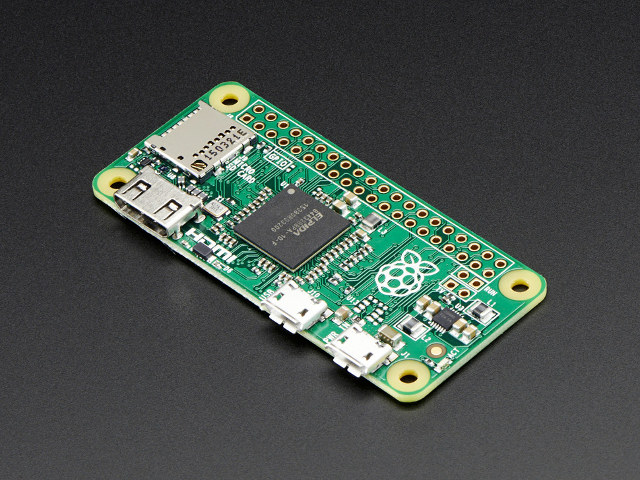
Announced a new Raspberry:
Today, I’m pleased to be able to announce the immediate availability of Raspberry Pi Zero, made in Wales and priced at just $5. Zero is a full-fledged member of the Raspberry Pi family, featuring:
- A Broadcom BCM2835 application processor
- 1GHz ARM11 core (40% faster than Raspberry Pi 1)
- 512MB of LPDDR2 SDRAM
- A micro-SD card slot
- A mini-HDMI socket for 1080p60 video output
- Micro-USB sockets for data and power
- An unpopulated 40-pin GPIO header
- Identical pinout to Model A+/B+/2B
- An unpopulated composite video header
- Our smallest ever form factor, at 65mm x 30mm x 5mm
With this, shields like the PXF 2.0, NavIO, Raspilot and the one from VirtualRobotix may have a way to cut down costs.
Comments
For all of those interested, we've just released thePXFmini, an open autopilot shield for the Raspberry Pi Zero to build a full featured Linux autopilot for only 69 €.
More information available at http://diydrones.com/profiles/blogs/pxfmini-an-open-autopilot-shiel....
We think that a real-time controller like the Pixhawk will take primary sensor data and "keep the bird flying". A secondary, Linux based processor will take over high level functions relating to mission objectives and safety, such as sense-and-avoid. These two processor nodes will connect to a CAN bus along with other sensors and actuators as needed for the mission.
The architectural separation of flight and strategic activities allows for rapid development of high level processing platforms, like we are seeing with the Pi zero, whilst the flight control aspect can evolve more slowly allowing for longer testing cycles, reduced complexity and consequently higher reliability.
Using the CAN bus as the main networking element permits multi-master control and therefore inherent redundancy in mission critical controls. It also allows for other, application specific processors to join the party without the need to redesign the whole system.
@laser Developer, sounds similar to raspilot. will everything be tied to one spi port for the sensors? I believe that is how raspilot does it currently.
CAN bus plus serial plus IO goes onto the bottom side of Pi Zero or the top side of Pi 2. Additional CAN remote IO board with 8 IOs configurable as in, out, PWM or ADC. Uses the Pixhawk as the flight controller and the Pi Zero for high level decisions, adaptive flight planning etc. Just an idea :).
Thanks for that. Looks good. Did you happen to find the pi0 schematic as well so we can find out what the pads are for on the rear side?
I think, it would be a good idea if special "Rpi Zero AutoPilot Sensors Hat" will also have USB hub functionality with 2-3 micro usb ports.
BTW some DIY Rpi Zero USBHub Hat projects are already available in the internet - link1, link2, schematic
Sent you a PM buddy! ;-)
@JB Interesting, lets talk in PM :-)
I know that wifi has some issues but it''s slowly getting there. I've seen Paddy's work, is cool. But it doesn't have to be for low latency FPV racing fun, it can also be used for some "Sunday flying" too. Have you seen what befinitiv has done? More analog type wifi video transmission. Works well.
What do you think of the ARM M0? I think it should do it. It's price is in line with the pi0, it really costs $0.49. Even runs nuttx but doesn't have the resources to run the full APM stack from what I can tell.
@JB
My humble advice is that with the current technology, it is difficult to get an acceptable video transmission over wifi with low budget (cost and power). At this scale , standard FPV equipment is still the best way to go...for now.
In WIFI experimentation in our community, I consider the work of Patrick Duffy to be the most interesting and quite impressive:
http://diydrones.com/profiles/blog/list?user=35boq0es291kc
-
1
-
2
-
3
-
4
-
5
of 5 Next